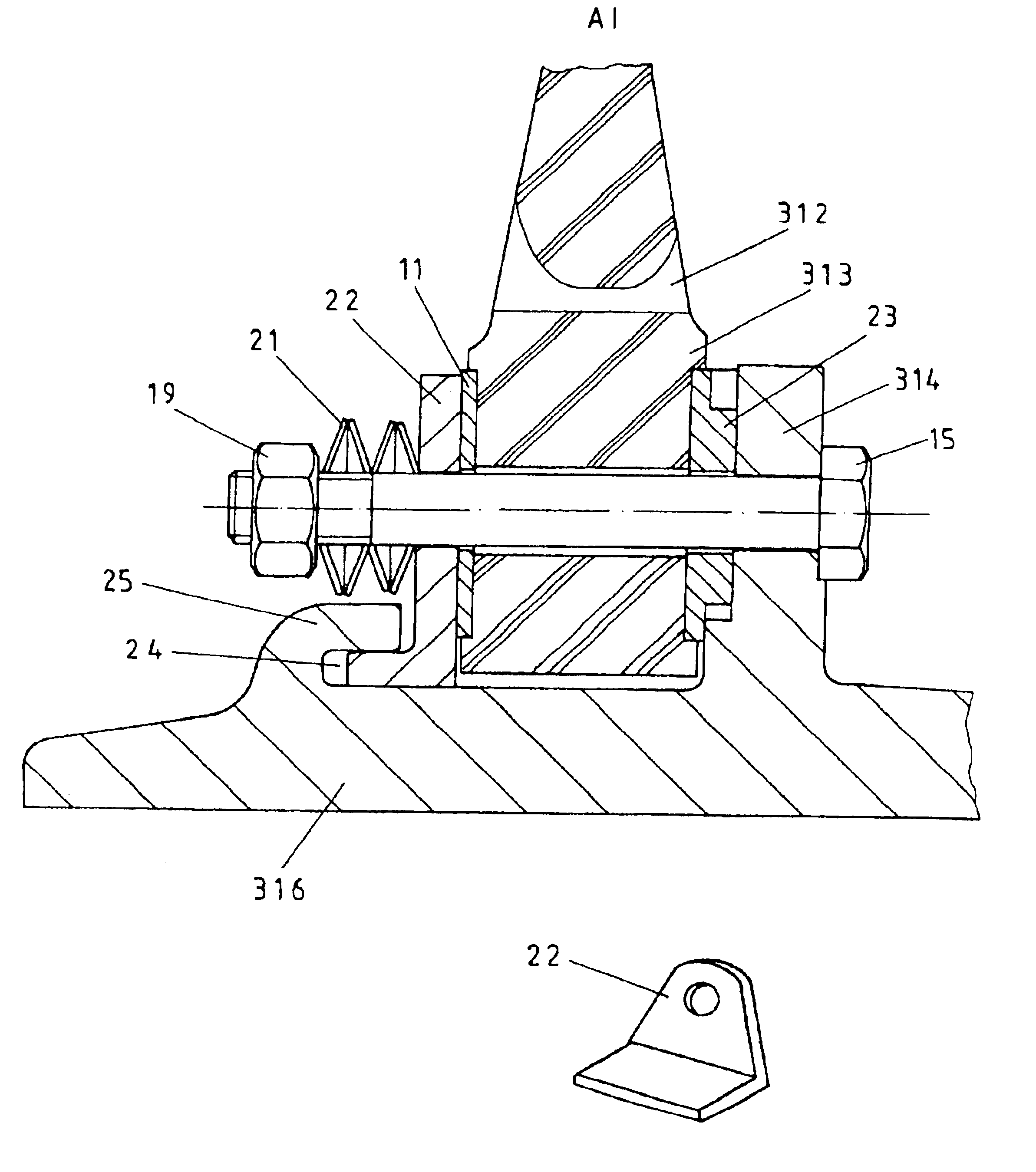Brake disk for a disk brake
a technology of brake disc and brake disc, which is applied in the direction of mechanical equipment, couplings, transportation and packaging, etc., can solve the problems of increased wear, premature fatigue, and the screw may lose the parallel position of the disc brake axis, so as to protect the disc from bending stress and simplify the assembly of the brake disc
- Summary
- Abstract
- Description
- Claims
- Application Information
AI Technical Summary
Benefits of technology
Problems solved by technology
Method used
Image
Examples
Embodiment Construction
In FIG. 1 there is shown a cross section through the screw connection between the hub body 16 and the brake ring 12. The hub body 16 is arranged on the shaft of the axle of a rail vehicle (not shown) in a rotationally fixed manner and is connected to the brake ring 12 in a rotationally fixed manner. The brake ring 12 on one or on two sides comprises friction surfaces (not shown) on which brake shoes may engage for producing the braking force. Since with the braking procedure there occurs the production of heat at the brake ring 1, the connection between the brake ring 12 and the hub body 16 must be designed such that a thermal expansion of the brake ring 12 may be effected and simultaneously a secure and centred seating of the brake ring relative to the hub body 16 or to the rotational axis of the brake disc is ensured. Simultaneously it is desirable for the screws 15 used for connection of the hub body 16 to the brake ring 12 to be protected from bending stresses in the case of the...
PUM
 Login to View More
Login to View More Abstract
Description
Claims
Application Information
 Login to View More
Login to View More - R&D
- Intellectual Property
- Life Sciences
- Materials
- Tech Scout
- Unparalleled Data Quality
- Higher Quality Content
- 60% Fewer Hallucinations
Browse by: Latest US Patents, China's latest patents, Technical Efficacy Thesaurus, Application Domain, Technology Topic, Popular Technical Reports.
© 2025 PatSnap. All rights reserved.Legal|Privacy policy|Modern Slavery Act Transparency Statement|Sitemap|About US| Contact US: help@patsnap.com



